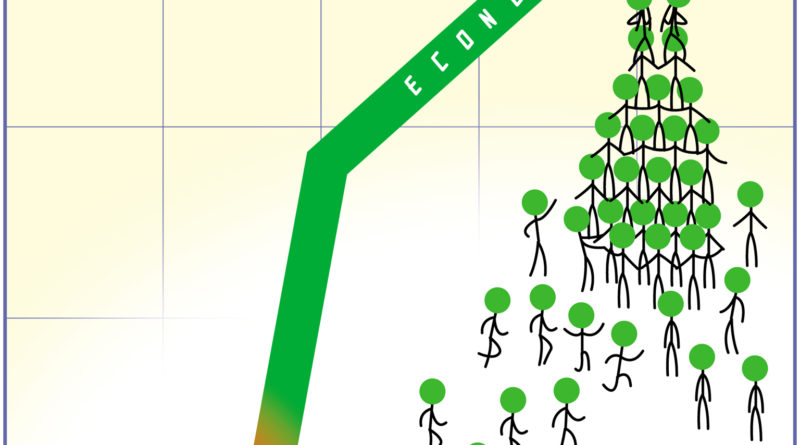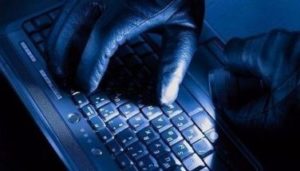BIZ-COLUMNIST: Economic Affairs- Can we kick-start the economy despite Covid-19?
Mass immunity testing might create a pathway
.
With Covid-19 still raging, social distancing, which has been tightened with the circuit breaker measures, is unavoidable. But it is causing immense damage to the economy by destroying demand because people can’t go out and consume, and crippling supply because people also can’t go out and produce.
.

@ [email protected]
– SPACE RESERVE FOR YOUR ADVERTISEMENT
.
While some collateral damage can’t be avoided, it would be unsustainable to continue such a policy – even on and off – for two years, which is about the time it will take before a vaccine against Covid-19 is created, tested, mass produced, distributed and deployed.
But it is also unthinkable to let up on social distancing, to allow people to get out and about and risk having Covid-19 spread like wildfire through the population.
Even after infection and fatality rates decline, as they surely will, it would be risky to relax social distancing rules without knowing how many infections lie latent among people sequestered at home. We also don’t know how long we would have to wait before we can be sure it’s safe to return to normal.
So what is the way out of this dilemma? Is it possible to avoid both widespread health risks and economic devastation? Can we at least shorten the time needed to restart the economy?
Part of the answer may lie in detecting immunity from Covid-19.
.
One hypothesis now being tested in many countries is this: If we can identify people who are immune from the disease – either because they had contracted it, fallen sick and recovered, or had been exposed to the virus, remained asymptomatic and developed immunity – those people can go back to work and help restart parts of the economy without the risk of setting off new waves of infection.
Identifying those who have developed immunity involves a different test from what is used for detecting infection.
The most common test for infection is the polymerase chain reaction (PCR) test, which involves taking a respiratory sample that is then analysed to detect the presence of the coronavirus.
But what is needed to test for immunity is a serological test, which can detect whether someone has developed antibodies to Covid-19. The serological test is simpler and cheaper – it can be done even by a finger-prick – and can yield results in minutes compared with the PCR test, which can take hours.
.
IMMUNITY CERTIFICATES
Assuming the serological tests are accurate, which is critical, those who test positive – meaning that they have developed antibodies and are immune – can be given “immunity certificates” that would enable them to go back to work without risking getting infected or infecting others.

.
Health experts in several countries, including the United States, are discussing the idea of handing out such certificates. Last week, Chile announced that it would start giving immunity certificates to some of the 21 per cent of the country’s confirmed cases who have recovered. They will be freed from quarantines and social distancing restrictions and can go back to work. As more people recover and develop immunity, more can go to work and the economy can slowly emerge from shutdown.
Serological testing can initially be targeted at people who have been most exposed to the coronavirus, such as healthcare workers. Those who are found to be immune can more confidently work in high-risk settings such as intensive care units, while others can be assigned to do less risky work.
Workers in essential services such as public transport and food services could also be tested, as well as people who do not have the option of working from home. Those who have developed immunity could be assured that they can continue working as they normally do.
People who belonged to large clusters of infections, such as dormitories and church assemblies, but who did not fall sick could also be tested – there is a chance that many of them could have developed immunity, as could children.
.

@ [email protected]
– SPACE RESERVE FOR YOUR ADVERTISEMENT
.
Serological tests would help determine whether children’s low infection rates are the result of immunity, which could enable schools to reopen. Overall, there are probably already hundreds, maybe thousands, of people who are immune and hunkered down at home, who don’t need to be – we just don’t know who they are or how many. Serological testing would help us find out.
Ideally, such tests should be extended to as much of the population as possible. This is what Germany is planning to do by launching Europe’s first large-scale antibody testing. Parts of the US are also going ahead. For example, Stanford University’s health policy department has collaborated with the local government to administer thousands of serological tests. And millions of volunteers across the country have offered to be tested..
.

@ [email protected]
– SPACE RESERVE FOR YOUR ADVERTISEMENT
.
UNCERTAINTIES
To be sure, there are various uncertainties surrounding serological testing and how seriously we can take its results.
For one thing, we don’t know how long immunity from Covid-19 lasts, although immunity from Sars (severe acute respiratory syndrome), which is also a coronavirus, was determined to last up to three years. Nor do we know for sure whether immunity is guaranteed to prevent reinfection.
Serological tests also need to be 100 per cent accurate: 95 per cent would not be good enough because even small numbers of “false positive” cases could set off new waves of infection if they were handed immunity certificates. Some people might also have developed antibodies that are too weak to prevent reinfection – we don’t know the minimum amount of antibodies needed to produce immunity. Medical opinion is divided on these issues, although there are some who, like Dr Anthony Fauci, director of the US National Institute of Allergy and Infectious Diseases, who is leading the country’s medical response to Covid-19, are confident that patients who recover are protected against reinfection.
.

@ [email protected]
– SPACE RESERVE FOR YOUR ADVERTISEMENT
.
OTHER BENEFITS
Serological tests may also be useful in treating patients with Covid-19. Some studies show that injecting blood serum with antibodies into people who have the disease would help cure them. Such serum transfusion therapy was successfully used in the treatment of Sars, Mers (Middle East respiratory syndrome) and the 2009 H1N1 flu.
Besides offering a pathway to reopen the economy and treat patients, serological tests would have other benefits. They can help determine the true rate of infection and Covid-19’s true fatality rate.
Currently these numbers are distorted. As several epidemiologists have pointed out, what we now consider to be the infection rate is confirmed infections divided by the total population. It does not include people who are infected but not tested, or people who were infected, had mild symptoms but who have recovered. The true infection rate is likely much higher than reported and the true fatality rate much lower.

@ [email protected]
– SPACE RESERVE FOR YOUR ADVERTISEMENT
.
The commonly cited estimate of 2 per cent to 4 per cent for fatalities refers to the proportion of identified infected cases who die. The true fatality rate should be deaths as a proportion of total infected cases, including those who were infected but have recovered and who have not been identified. In an important article in The Wall Street Journal on March 24, Stanford University professors of medicine Eran Bendavid and Jay Bhattacharya estimated that the true fatality rate could be as much as 10 times lower than estimates based on just the reported cases.
.

@ [email protected]
– SPACE RESERVE FOR YOUR ADVERTISEMENT
.
A more accurate picture of the extent of immunity in the population would also give a clearer idea of how far we are from “herd immunity” – a situation in which the proportion of the population that has become immune is high enough to ensure that the spread of the disease can slow or stop.
To visualise the concept of herd immunity, imagine an infected person without immunity as a red dot and immune persons as green dots. If a red dot is surrounded by green dots, it would be difficult for the disease to spread, even if there are other red dots present elsewhere, also surrounded by green dots.
Social distancing rules can then be relaxed and the economy can move into higher gear with a lower risk of our healthcare system being overwhelmed. Although we don’t yet know what proportion of the population would need to be immune for herd immunity from Covid-19 to set in – the proportion varies according to the disease – serological testing would provide valuable data on where we stand.
.

@ [email protected]
– SPACE RESERVE FOR YOUR ADVERTISEMENT
.
So far, Singapore has used serological testing to help with contact tracing. In February, a team from Duke-NUS Medical School deployed a serological test to solve the mystery of the missing link between two clusters of cases. The mystery was how Case 66 got the disease, which he then passed on to 16 members of the Grace Assembly of God church. It turned out that Case 66 was previously exposed to a married couple at a Chinese New Year gathering. Although the couple had no symptoms when they were traced, serological tests showed they had developed antibodies and had been infected with Covid-19 earlier, at the time of the Chinese New Year gathering, which was when they passed on the disease to Case 66.
.

@ [email protected]
– SPACE RESERVE FOR YOUR ADVERTISEMENT
.
This was an innovative use of serological testing. But beyond helping with contact tracing, there are good arguments for such testing to be expanded, initially to selected groups of the population, and then more widely.
.

@ [email protected]
– SPACE RESERVE FOR YOUR ADVERTISEMENT

@ [email protected]
– SPACE RESERVE FOR YOUR ADVERTISEMENT
Using the results of such tests to determine immunity is not risk-free, but medical experts would know how to minimise those risks.
We must also ask: what is the alternative? Continuing with social distancing also entails risk – not only to the economy, but also to health. Prolonged periods of social distancing will lead to more loneliness and depression among people, which impacts health.
.

@ [email protected]
– SPACE RESERVE FOR YOUR ADVERTISEMENT
.
A big and prolonged economic downturn, which would entail more unemployment and poverty, would also take a toll on health, especially among low-income groups, and this would be even more pronounced in poorer countries.
Unlike many large countries, Singapore has the capacity to do serological testing to cover a significant part of its population.
It must use this advantage to collect the data that can help policymakers make well-informed decisions on when and how fast they can kick-start the economy, even as the menace of Covid-19 still lingers.
.
.











